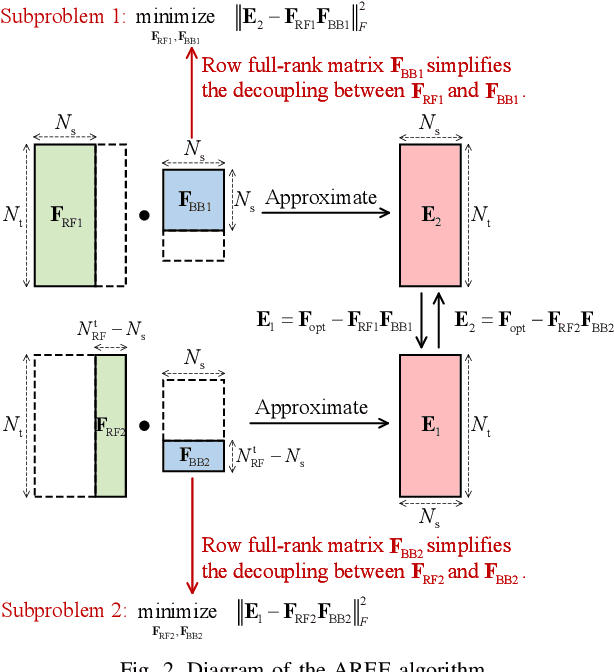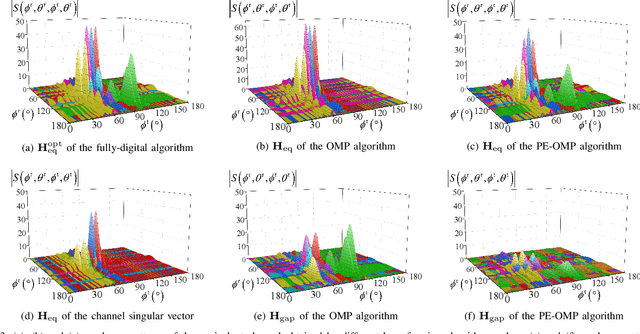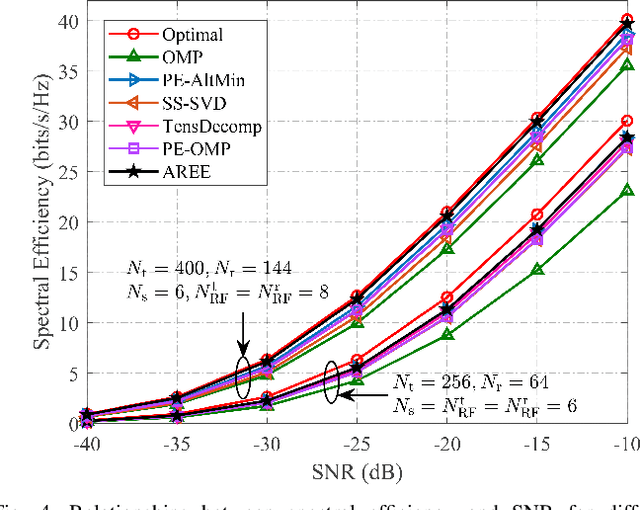AREE-Based Decoupled Design of Hybrid Beamformers in mmWave XL-MIMO Systems
Paper and Code
Jul 03, 2025



Hybrid beamforming has been widely employed in mmWave communications such as vehicular-to-everything (V2X) scenarios, as a compromise between hardware complexity and spectral efficiency. However, the inherent coupling between analog and digital precoders in hybrid array architecture significantly limits the computational and spectral efficiency of existing algorithms. To address this issue, we propose an alternating residual error elimination (AREE) algorithm, which decomposes the hybrid beamforming problem into two low-dimensional subproblems, each exhibiting a favorable matrix structure that enables effective decoupling of analog and digital precoders from the matrix product formulation. These subproblems iteratively eliminate each other's residual errors, driving the original problem toward the optimal hybrid beamforming performance. The proposed initialization ensures rapid convergence, while a low-complexity geometric channel SVD algorithm is developed by transforming the high-dimensional sparse channel into a low-dimensional equivalent, thereby simplifying the derivation of subproblems. Simulation results demonstrate that the AREE algorithm effectively decouples analog and digital precoders with low complexity, achieves fast convergence, and offers higher spectral efficiency than existing beamforming methods.
 Add to Chrome
Add to Chrome Add to Firefox
Add to Firefox Add to Edge
Add to Edge